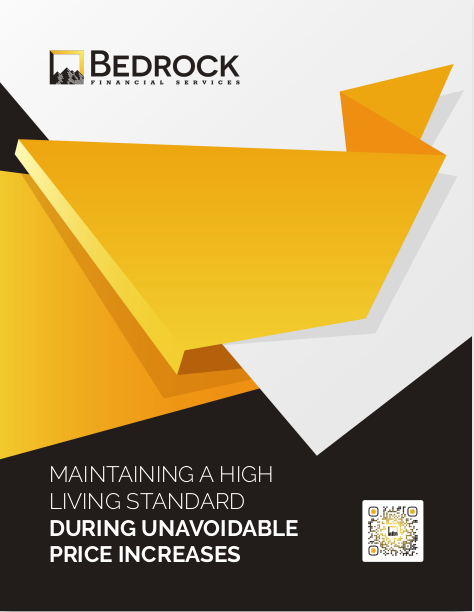Key Takeaways
-
Clients retain more when you present information in visual, structured, and emotionally engaging formats instead of lengthy verbal explanations.
-
Teaching without overwhelming clients requires strategic tools like infographics, analogies, and bite-sized content delivered at the right moment.
Why Less Talk Leads to More Understanding
In 2025, client attention spans are shorter than ever. With digital overload and decision fatigue at an all-time high, traditional methods of educating clients no longer work. Long-winded explanations, jargon-heavy pitches, or marathon meetings don’t make you look professional—they just drain your client’s energy. Your job is to help people make informed decisions, not memorize an insurance manual.
What clients need is clarity. What they want is simplicity. And what they appreciate most is when you respect their time while still delivering value.
Set the Stage Before You Teach
Before diving into policies or features, start by creating the right conditions for learning:
-
Ask Permission to Educate: Don’t assume your client is ready to learn. Begin by saying, “Would it help if I showed you how this works visually?” This small question shifts the dynamic from lecture to collaboration.
-
Gauge Their Starting Point: Everyone has a different level of financial literacy. Ask one or two open-ended questions to see where your client stands. This allows you to tailor your approach and avoid unnecessary detail.
-
Set a Time Expectation: Let clients know how long the discussion will take. Say, “This will take about five minutes,” and stick to it. This reassures them that you’re not going to hijack their afternoon.
Visuals Are Your Best Teaching Tool
You don’t need to be a graphic designer to make something visual. Even a hand-drawn diagram on a piece of paper works better than a long speech.
-
Use Flowcharts to Show Decision Points
-
Draw Timelines for Long-Term Policies
-
Sketch Comparisons (like term vs whole life)
-
Turn Features into Icons (umbrella for coverage, clock for duration)
The goal is to give your client a “mental image” that sticks. Visuals don’t just clarify information; they also build trust. A client who sees you draw out a concept in real-time sees a professional who wants them to truly understand.
Teach in 3-Minute Segments
Break your educational content into three-minute bursts. This aligns with the brain’s working memory and avoids overload. Here’s a structure you can follow:
-
Introduce One Concept
-
Explain it in 1-2 Sentences
-
Give a Quick Visual or Analogy
-
Pause and Ask for Feedback or Questions
This keeps the session interactive and ensures you’re not five minutes into a topic the client already understood two minutes ago.
Use Analogies to Bridge the Gap
Most clients don’t understand industry terminology, but they do understand real-life metaphors. Analogies take the abstract and make it relatable:
-
“This policy works like a safety net under a tightrope.”
-
“Think of this like a subscription: you pay monthly, and in return you have access to specific benefits.”
-
“It’s like renting versus owning, but for insurance.”
When clients connect emotionally or conceptually with what you’re saying, they remember it—without you repeating yourself.
Deliver Content in Layers
Not everything needs to be explained in one sitting. Think of your sales process as a series of layers:
-
Layer 1: Core Need – What the client wants or fears most.
-
Layer 2: Policy Fit – How the product solves that need.
-
Layer 3: Optional Enhancements – Riders or extras.
-
Layer 4: Fine Print – What they should be aware of if they decide to proceed.
This sequencing reduces cognitive load and makes your conversation feel more like a story and less like a lecture.
Reinforce Key Concepts with Takeaways
After explaining a policy or concept, provide a quick recap in a format the client can take with them:
-
A one-page summary
-
A screenshot of your visual breakdown
-
A checklist of what you covered and next steps
You can send this recap within 24 hours of your meeting. This keeps the information fresh and positions you as someone who respects follow-through.
Let Clients Teach It Back
This isn’t a pop quiz, but a powerful way to reinforce understanding. Try this approach:
“If a friend asked you what this policy does, how would you explain it to them?”
You’ll learn whether your teaching worked, and if it didn’t, where you need to clarify. It also gives your client confidence in their decision—they now own the information.
Keep Language Human, Not Technical
The more industry language you use, the more distance you create. Clients tune out the moment they hear unfamiliar or formal terms without explanation.
Instead, use:
-
“What this really means is…”
-
“Here’s the simple version of that…”
-
“In plain terms, you can think of it like this…”
This approach shows empathy. It says, “I get that this is new territory, and I’m here to make it easier.”
Use Strategic Pauses
A pause is not silence. It’s space for clients to absorb, reflect, or ask questions. In every conversation, pause:
-
After you introduce a key concept
-
After a client asks a deep question
-
Before you jump into a comparison or recommendation
In 2025, attention is a limited currency. If you never pause, you’re flooding a client who’s already overwhelmed.
Embrace Asynchronous Education
You don’t need to say everything in real time. Teach some things while you sleep:
-
Record a 2-minute video on a concept you often explain
-
Use a digital brochure with icons and visual aids
-
Build a mini-resource library you can text or email after the call
This turns your time-consuming explanations into scalable assets that keep working even when you’re not in the room.
Less Talking, More Teaching
You don’t need to talk more to be a better teacher. You just need to structure better, illustrate smarter, and respect the limits of how people learn.
The best agents in 2025 are using tools that make education efficient, memorable, and respectful of a client’s time. They understand that teaching is not about downloading everything you know into someone else’s brain. It’s about unlocking the right level of understanding for them to move forward with confidence.
If you’re ready to stop losing clients to confusion or overwhelm, then we invite you to explore what we offer at Bedrock Financial Services. We help professionals like you streamline client education, create scalable teaching tools, and close sales faster—without ever talking anyone’s ear off.







